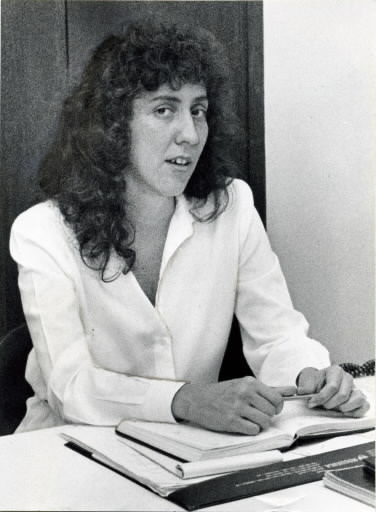6. The Unknown Symptoms of Cesium Contamination
Mar. 26, 2013
Chapter 6: Brazil and Namibia
Part 1: Cesium Contamination in Goiânia
Part 1: Cesium Contamination in Goiânia
"Shall we talk outside?" Dr. Maria Curado of the Leide Foundation beckoned us to follow her out of the second-floor surgery. A young doctor in the same room had just finished telling us that there were no problems with the health of those exposed to the cesium powder. As we went down the stairs, Dr. Curado began to speak in a low voice.
"No problems? Who are they trying to kid? That's what they tell the media, but I know better. I'm always arguing with the rest of the staff about the foundation's policies."
We drove to a restaurant in downtown Goiânia where she elaborated on the situation of cesium victims in the city. Of the 249 people recognized by the state government as having been exposed to cesium, the treatment of 120 consisted of showers to wash off the substance. The remaining 129 were hospitalized, and 50 of those were feared to have actually absorbed cesium-137 into their bodies. Fourteen of the worst cases from this last group had been taken to the naval hospital in Rio de Janeiro, where four died.
Eighteen months after the accident, ninety-six patients were still going to the foundation's clinic for regular checkups.
"Rather than there being no problems, we're encountering symptoms we've never seen before," Curado told us, leaning across the table. A year after the accident, burn-like marks began to appear on the skin of those exposed to the cesium, regardless of the amount involved. At present there are twenty-eight known cases with these symptoms. Despite this, the foundation insists that it can help only those who are officially registered.
"I'm always telling the staff they should examine anybody who shows these symptoms, regardless of whether they're on the official register or not. But they won't listen. It's not me who decides the foundation's policies, and I can't see them changing their ideas in the near future."
Dr. Curado is also carrying out her own research on cancer, reading papers on the effects of radiation in an effort to broaden her knowledge. "There's still so much that we don't know about radiation... but even so, I never thought I'd be treating patients with symptoms like this."
When we spoke to Dr. Curado, she had just been invited to the International Physicians for the Prevention of Nuclear War (IPPNW) World Congress in Hiroshima, and was greatly looking forward to speaking with fellow doctors there concerning the treatment of radiation victims. A myriad of questions face the doctors dealing with the aftermath of the cesium tragedy. Why is it, for example, that the group with the highest level of exposure of between 620 and 700 rads survived, while four of those in the next group who were exposed to between 450 and 600 rads died? What conclusions should be drawn about the relationship between dosage and damage to health? The available literature warns that cancer is likely to appear between two and five years after exposure, but what concrete measures may taken to counteract this? What can be done to alleviate the depression suffered by cesium victims? The list goes on.
"Whether it is officially recognized or not, people are suffering from the effects of exposure to cesium-137 in Goiânia, and I have a feeling that those effects are going to become even more apparent over the next few years. If only that cancer clinic had disposed of the cesium properly. As a doctor myself, I feel so ashamed. We must do all we can to help the victims."








